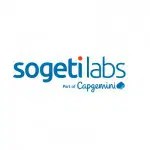The empathic computer
Jan 8, 2014
This article was written by Michiel Boreel, Sogeti Group CTO
Although we have been hearing about the so-called Internet of Things (IoT) for over ten years, it is becoming clear that we now see this technology quickly gaining mainstream adoption. In fact, the internet of things, or as we prefer to call it, just ‘Things’, is the fifth technology element that makes a new form of Empathic Computing possible. Combined with Social software, Mobile apps, advanced Analytics and Cloud services, the internet of Things (SMACT) creates a kind of ambient intelligence that is quietly serving any information need whenever required. By constantly monitoring our behavior, the system is establishing a deep understanding about our intent, the task we are trying to perform. Wearable technology in all kinds of form factors on, in (intelligent tattoo’s) or even under our skins (swallobles) gives new meaning to the phrase ‘always-on’. Cognitive systems step-by-step build a better understanding of our context and are able to predict and anticipate our needs. We will learn to trust these intelligent assistants and award them more and more agency to take over mundane tasks on our behalf, so we can focus on more important things in life.
An interesting although early example is that of GlowCap. David Rose’s start-up company Vitality realized a couple of years ago that by adding a sensor and communication to a simple jar of pills a big problem in healthcare, poor adherence to prescribed medication schedules, could be solved. The GlowCap bottle actually registers when it is opened and compares this event to the prescribed schedule. If people forget taking their medication, they are subtly notified by a flashing light. If they still do not react additional notifications or even a message to a healthcare provider or anyone in the ‘social’ network can be sent.
Our world is quickly becoming more instrumented and interconnected. Because of the continuance of Moore’s law, we are reaching a price point where any physical object becomes enhanced with processing and communication power. The ubiquity of these billions of ‘enchanted’ objects will fade the boundary between our physical world and virtual cyberspace. It is only a matter of time before all these objects become interconnected and start collaborating on our behalf. This is when they truly become useful, accomplishing more complex tasks. However this requires solving three important issues.
The first issue is the way we interact with these ‘empathic computers’. Clearly, continuing on the road that we are on right now, with any app on our smartphone constantly asking for attention through alarms and notifications, will quickly drive us crazy. We need a new approach of ‘calm’ technology where only the most important notifications subtly enter our consciousness, preventing what is now becoming knows as partial attention disorder. ‘Better than Apps’ is the phase where app intelligence moves of our smartphone into all kinds of physical objects. Why do we have a weather app on our phone? Our umbrella should be enchanted with technology that notifies us of rain in the forecast by a blue flashing light build into the handle.
Second issue is that in reality there is not (yet) one Internet of Things; there are many Internets of Things. In present day practice the intelligent Things are usually not aware of each other, let alone able to communicate and coordinate with each other. Since many of the providers of the Things see competitive benefits at stake, they choose for closed system design, ignoring the opportunities for connecting products through open API’s. Forrester’s leading analyst in this domain, Sarah Rotman Epps uses the example of Nike’s intelligent sport shoes, Jawbone’s Up wristband and Freescale’s intelligent basketball and underlines the fact that they are not even aware that they are part of the same game, let alone being able to exchange information.
Third issue is that we need to start design great customer experiences from an end-to-end perspective and then be prepared to adjust our operational processes accordingly. Putting the empowered consumer front and center was already important in creating mobile apps that are broadly used and in effectively connecting with customers through social media. ‘Things’ will only further underline this necessity. It is no longer enough to enhance the digital capabilities of the enterprise. The organizational capabilities, often determined by operational processes, have to become completely aligned to the great experience the consumer expects.

 English | EN
English | EN 
